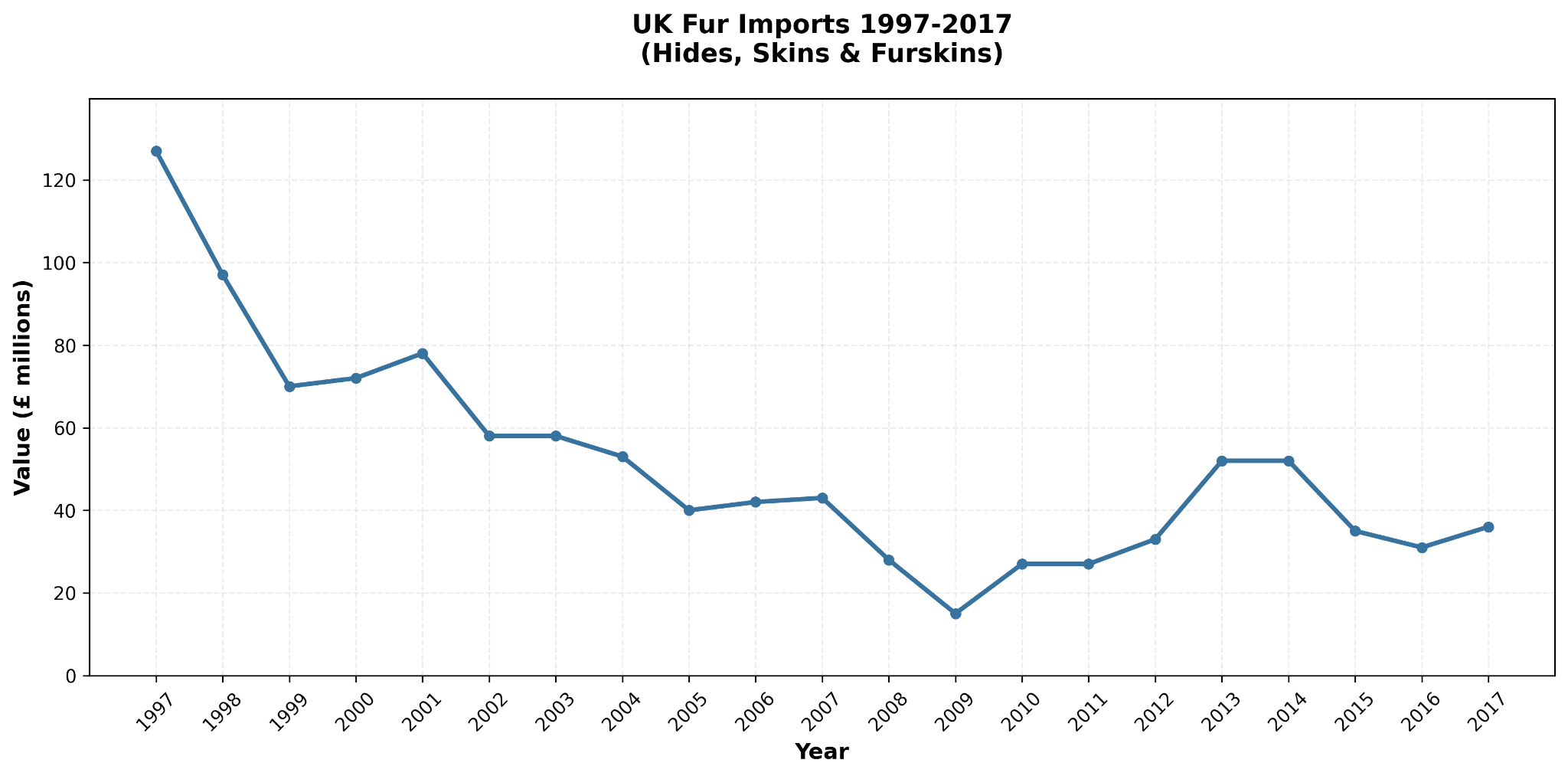Hugh P
Bio
Participation2
How others can help me
Want to leave anonymous feedback for me, positive, constructive or negative? https://www.admonymous.co/hugh
Posts 2
Comments27
Topic contributions5
In its current form, Arthropoda costs about $175K per year […] We’re about $55K short for 2026
A possibly naive question — does this mean:
- Arthropoda needs $55k to remain at the same level of funding (inflation-adjusted) as 2025?
- Or that Arthropoda needs $55k to fulfil its 2026 plan, which may involve an increase (or decrease) in funding?
- Or is $55k the overall “room for more funding” in some other sense?
The ban on fur farming in the UK [...] didn’t lead to an increase in imports for fur
There's some data from the ONS on this, graph below. Here's the fur data separately (see the "Whole world" row). The ban took effect on 1 Jan 2003. So this seems to be true, although I guess demand for fur was already falling.
Potential opportunity to influence the World Bank away from financing factory farms: The UK Parliament is currently holding an open consultation on the future of UK aid and development assistance, closing on November 14, 2025. It includes the question, "Where is reform needed in multilateral agencies and development banks the UK is a member of, and funds?". This would include the World Bank, which finances factory farms,[1][2] so could this consultation be a way to push it away from doing that, via the UK government?
Are any organisations planning on submitting responses? If so, should there be an effort to co-ordinate more responses on this?
- ^
"Why the World Bank Must Stop Funding Factory Farms", 30 Apr 2024 https://www.worldanimalprotection.us/latest/blogs/why-the-world-bank-must-stop-funding-factory-farms/
- ^
"The World Bank has a factory-farm climate problem", 20 Nov 2024 https://grist.org/food-and-agriculture/world-bank-development-banks-factory-farm-climate-industrial-agriculture/
Yes, this is a good point -- perhaps you could speak of "the dairy industry's welfare footprint" if you sought to avoid this.
Though I guess people could only support policy change that tried to, for example, reduce flying in favour of travel by train, if they are first aware of the differences in emissions (254g vs 6g per km apparently), rather than just being aware that both release some emissions -- and perhaps the idea of carbon footprints helped popularise that there are such big differences (?)
But maybe there's something about the term "footprint" which is too closely tied to individual behaviour, and a better term could be found.
I think the term "welfare footprint" (analogous to the term "carbon footprint") is extremely useful, and we should make stronger attempts to popularise it among the public as a quick way to encapsulate the idea that different animal products have vastly different welfare harms, e.g. milk vs eggs.
(You might already be aware but I think that website you linked is just LLM-generated articles. They're quite difficult to avoid on search engines these days. The information might still be accurate of course.)


When people write about where they donate, aren’t they implicitly giving a ranking?